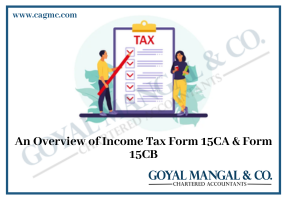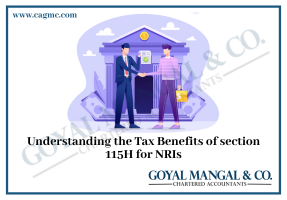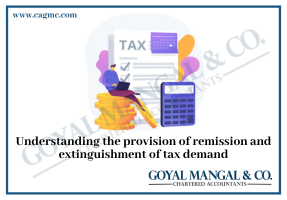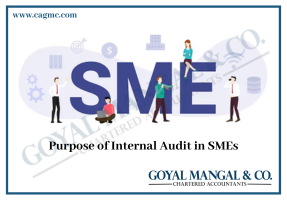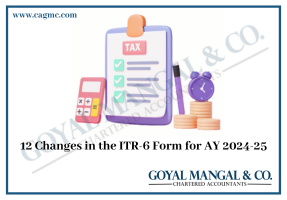
Managing your finances efficiently generally needs to examine a myriad of forms and guidelines. Among all the forms, Form 15G and 15H play a significant role in supporting you in saving on taxes and protecting your financial future. In this comprehensive study, you all need to know about Form 15G and15H. Furthermore, we will discuss the eligibility criteria to file these forms and know about how to fill form 15G and 15H.
| Table of Content |
All you need to know about Form 15G and15H
These are the official forms used in India for the motive of securing the deduction of tax at source (TDS) on certain types of income. The Form 15G is a declaration as per section 197A of the Income Tax Act, 1961. It is generally used by individuals, along with Hindu Undivided Families (HUFs), who are below 60 years old. By filing Form 15G, the person declares that their whole income for the financial year is less than the taxable threshold. Meanwhile, no TDS must be deducted from the particular income.
Form 15H provides the same motives same as to FORM 15G but it is for senior citizens as per section 197A of the Income Tax Act, 1961. It permits senior people to declare their income, which is less than the taxable threshold. Thus, exempting the particular income from TDS.
Purpose of Filing Forms 15G/ 15H
The primary purpose of filing FORM 15G and 15H is to prevent the TDS on certain income, especially interest income when the recipient’s total income is below the taxable threshold. These forms are declarations made by individuals to the payer (usually banks or financial institutions) to confirm that their income falls below the taxable limit, and therefore, TDS should not be deducted from that income. Here’s a more detailed explanation of their purposes:
Form 15G: The purpose of Form 15G is to declare the total income for the financial year. It involves a certain income for which the form is filed, and less than the basic exemption limit. By doing this, a person can secure their TDS on their income.
Form 15H: Its motive is to declare the whole income of FY, including the certain income for which the form is filed, and less than the basic exemption threshold, which applies to senior citizens. This permits them to secure TDS on their income.
Eligibility criteria for filing Form 15G and15H
In India, the eligibility criteria for filing Form 15G and 15H are specific and must be met to prevent the TDS on certain income. Here are certain criteria for each form:
FORM 15G:
- Age: This form is generally for individuals who are below the age of 60. HUFs can also use it.
- Resident Status: The Individual should reside in India for the FY, in which the form has been submitted.
- Taxable Income: One must mention the taxable income of the FY along with the income for which they are filing the form, which must be less than the basic exemption threshold.
FORM 15H:
- Age: The form 15H limit for senior citizens who are 60 years or older than that.
- Resident Status: Individuals should be resided in India during the FY, in which one form is submitted.
- Taxable Income: Individual’s whole taxable income of the FY along with which form is submitted, must be less than basic exemptions. For senior citizens, the basic exemption limit differs from the general exemption limit. Thus, one needs to check the latest limits for the appropriate assessment year.
Filing Form 15G and 15H for rental payment
Step-by-step procedure for submission of Form 15G and 15H
These forms are generally filed with banks or financial institutions from which you receive interest income. Here’s a step-by-step guide on how to submit these forms:
- Step 1: Obtain the Relevant Form: You can obtain FORM 15G and 15H from the official website of the Income Tax Department of India or from the bank where you have the interest income. One can also ask the bank for a blank form.
- Step 2: Fill Form: It is advisable to cautiously fill the form with appropriate information, such as your name, address Permanent Account Number (PAN), and other relevant details. Provide information regarding the income for that individual submitting the form along with the payer’s name and amount of income.
- Step 3: Verify Eligibility: There are certain eligibility criteria for each form, which is already discussed above.
- Step 4: Sign the Form: Sign the form. This declaration should be made by the individual who is the recipient of the income.
- Step 5: Submit the Form: One can file the form in one of the following ways:
- Offline: Visit the bank or financial institution where you have the interest income. Submit the form along with a self-attested copy of your PAN. The bank will keep a record of the form for its records.
- Online: Some banks allow you to submit FORM 15G and 15H online through their internet banking portals. Once check with the bank to see if this option is available.
- Step 6: Acknowledgment: After filing a form, the bank will provide you with an acknowledgement receipt of Form 15G and 15H. To proceed further accordingly.
EndNotes
The FORM 15G and 15H are crucial techniques for taxpayers, mainly for those with income from interest-bearing mechanisms. Through this article, we to know about the motives, eligibility criteria, step-by-step procedure to apply and aggregate amount of income which form no. 15G filed. It can make sure individuals are paying taxes where required, thus, optimizing their financial returns. However, one must be careful and honestly file these forms as incorrect declarations may lead to legal proceedings. With a better understanding of these forms, one can manage their finance effectively.

